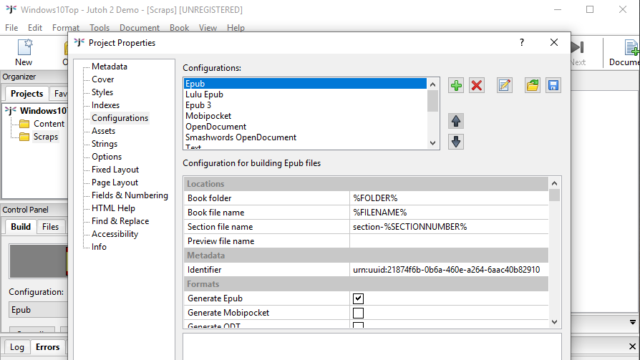
- #JUTOH MANUAL HOW TO#
- #JUTOH MANUAL MAC OS#
- #JUTOH MANUAL PDF#
- #JUTOH MANUAL INSTALL#
#JUTOH MANUAL MAC OS#
On Mac OS X, how can I improve small text display?.On Mac OS X, I can't save to certain filenames.On Mac OS X, why does kindlegen fail with "cannot create the temp file"?.Does Jutoh run on both Intel and PowerPC Macs?.Does Jutoh run on 64-bit Windows Vista and Windows 7/8?.
#JUTOH MANUAL INSTALL#
How do I install Kindlegen and Kindle Previewer?. How can I synchronize files between multiple computers?. Can I store my Jutoh data files on a USB drive?. Is Jutoh compatible with Dropbox and Google Drive?. The OpenOffice Writer desktop icon isn't working. How do I changes styles, for example to add indentation?. Can I use Dragon Dictate/Naturally Speaking with Jutoh?. How do I solve an install problem when writing to the Documents folder on Windows?. How do I install Jutoh on Windows 8, 10 and 11?. How do I move Jutoh to another machine?. What happens to my work if I uninstall Jutoh before upgrading?. What do I do if I've lost my registration key?. What do I do if Jutoh doesn't accept my registration key?. Can I use the same registration key for Jutoh both at home. Do I pay for each operating system I run Jutoh on?. In particular, “KB0333: Using Jutoh and KDP to create a print book” gives step-by-step instructions.Please see also the Knowledge Base which is included in Jutoh for searching via Jutoh's toolbar.Ībout Jutoh | Licensing and Support | Technical Issues Contents Plus the TOC is an ‘advanced’ one that lives in the project itself and not just generated on compilation so Jutoh automatically replaces the whole TOC in that section with the PDF-friendly TOC.įor more details, type “print book” into the Jutoh toolbar. This project has set the project page layout mode to ‘manual’ so page layout is specified per section and not in the simplified automatic mode that gives limited header and footer styles. There are page styles for the first pages from the TOC onwards (with Roman numeral page numbers) and for the first chapter onwards (regular page numbers, with chapter headings). You can see an example of all this if you download the Jutoh book project file JutohBook.jutoh from the Book page. Jutoh takes the instructions you have given Jutoh for finding headings to put in the TOC, and creates a “tableofcontents” field that it writes to the ODT file, so the word processor will rebuild the TOC when you update fields. Jutoh will generate a PDF-friendly table of contents with page numbers as well as links, if you have already created an ‘advanced’ table of contents for your project using Book | Build Table of Contents. 
Once you have set this up, whenever you want to create a PDF, you only have to choose the OpenDocument configuration, click Compile, click Launch to open it in a word processor, update the fields, and export to PDF. Mainly this involves editing the OpenDocument configuration to specify size and margins, choosing how Jutoh will deal with page layout in Project Properties / Page Layout, and (optionally) editing page styles in the Page tab of your section properties.
#JUTOH MANUAL HOW TO#
If you look at the Jutoh help topic “Creating OpenDocument files for print and PDF”, under the topic Jutoh User Guide, you’ll find out how to set the paper size and margins, and how to set up headers and footers for different parts of your book. You need to get the paper size and margins right, provide a suitable table of contents, and follow other instructions provided by the POD service. OK, so there’s slightly more to it than that.
#JUTOH MANUAL PDF#
From there, it’s a few clicks to export as PDF ready to send to your POD service.

One of Jutoh’s tricks is to export your project as an OpenDocument Text (ODT) file, which you can easily open in OpenOffice, LibreOffice or even recent versions of Microsoft Word. Fortunately, by using Jutoh you haven’t cut yourself off from print and nor do you have to dig out the old word processor file you were using before you imported it into Jutoh and applied all those edits. Using a print-on-demand service such as Lulu, CreateSpace or KDP Print is a great way to see your books in print, and provide an alternative to your readers who may prefer a physical copy. But ebooks haven’t killed print books yet, and probably never will. Jutoh’s Print on Demand wizard, showing page styles






 0 kommentar(er)
0 kommentar(er)
